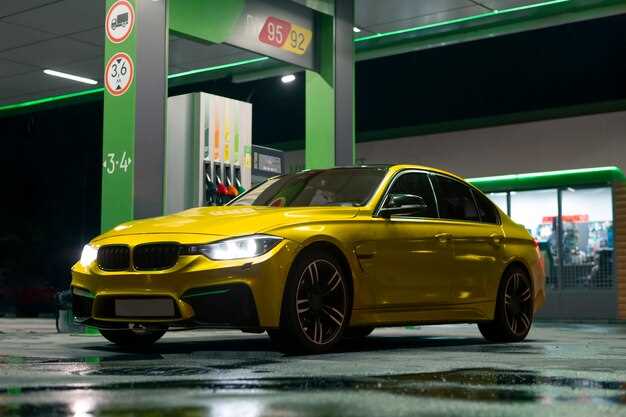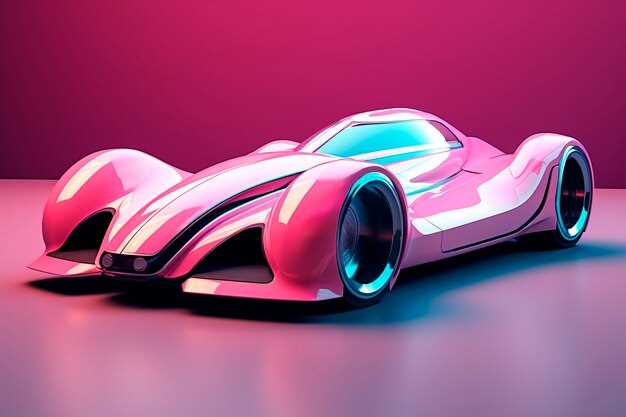
The world of sports cars is not just about performance and engineering; it is also a canvas for expressing individuality through vibrant colors. As we approach 2025, the automotive industry is witnessing a shift in the color palette, reflecting broader trends in design and consumer preferences. This year marks an exciting evolution in the hues that define high-performance vehicles, moving beyond traditional shades to embrace bold and innovative tones.
Colors in sports cars are increasingly being influenced by advancements in technology and environmental considerations. With a growing emphasis on sustainability, manufacturers are experimenting with eco-friendly paint options that do not compromise on aesthetic appeal. Moreover, the rise of electric and hybrid sports cars is steering the color trends toward more futuristic and vibrant shades, capturing the spirit of innovation that these vehicles represent.
In 2025, we can expect to see a captivating mix of classic and contemporary colors making waves on the roads. From striking metallic finishes to deep, rich tones, the range of colors available will cater to diverse tastes and preferences. Understanding these upcoming trends will help enthusiasts and potential buyers alike choose the perfect hue that not only complements the performance of their vehicles but also reflects their personal style.
Emerging Color Palettes Influencing Sports Car Designs

The automotive industry is evolving, and so are the colors that define sports cars. As we approach 2025, various trends are shaping color palettes that are not only visually appealing but also embody the spirit of performance and innovation.
One significant trend is the rise of metallic shades, which enhance the sleek lines of sports cars and reflect light in dynamic ways. Colors like deep emerald green, vibrant copper, and rich blue are gaining traction. These hues not only emphasize the car’s design but also give it a more luxurious feel.
Another emerging palette incorporates matte finishes in unexpected colors. Matte black has been a staple for years, but now manufacturers are exploring tones like matte purple and olive green. These muted colors provide a subtle yet aggressive look that sets sports cars apart from standard vehicles.
Additionally, the trend of two-tone color schemes is gaining popularity, allowing for greater customization and personalization. Combinations of bright colors with neutral shades–such as yellow and gray or red and white–offer a striking visual contrast that attracts attention on the road.
Lastly, the influence of sustainability is leading to the adoption of eco-friendly paint options that feature colors derived from natural materials. Shades inspired by earth tones, such as terracotta and soft beige, reflect a growing trend towards environmental consciousness while maintaining sporty aesthetics.
As the race towards 2025 continues, these emerging color palettes are set to redefine sports car designs, making them not only faster but also more visually appealing and aligned with current trends.
Impact of Eco-Friendly Paint Technologies on Color Selection
The automotive industry is undergoing significant transformations as manufacturers increasingly adopt eco-friendly paint technologies. These innovations not only align with global sustainability goals but also influence color trends in sports cars. With a focus on reducing environmental impact, the choice of colors is shifting toward more sustainable practices.
One major trend is the utilization of water-based paints, which limits the use of harmful solvents traditionally found in automotive finishes. This shift allows for a broader spectrum of vibrant colors, as water-based formulations can easily incorporate various pigments without compromising quality. As a result, sports car manufacturers can experiment with new colors that were previously challenging to achieve.
Additionally, advancements in eco-friendly paint technologies have led to the development of UV-resistant and self-healing coatings. These features not only enhance the durability of the paint but also allow for bolder color choices that remain vibrant over time. Consumers are drawn to innovative colors that reflect both personal style and environmental consciousness, merging aesthetics with eco-awareness.
Furthermore, the influence of biobased pigments, derived from natural sources, is becoming more prominent in the market. These pigments are less toxic and offer a unique palette of colors that are both eye-catching and sustainable. As awareness of environmental issues grows among consumers, the demand for these unconventional colors is likely to increase, pushing manufacturers to rethink their color offerings.
In conclusion, the integration of eco-friendly paint technologies is reshaping the landscape of color selection in sports cars. By embracing sustainable practices, the industry is not only meeting consumer expectations for environmentally responsible products but also fostering creativity in design. As we look towards 2025, these trends will undoubtedly continue to evolve, influencing the future of automotive aesthetics.
Consumer Preferences: Analyzing Popular Color Choices for 2025

In 2025, consumer preferences in the automotive industry are expected to shift toward a more vibrant and diverse palette of colors for cars. Research indicates that buyers will increasingly favor bold and expressive hues that reflect their individuality and lifestyle. Bright colors such as electric blue, vibrant red, and sunny yellow are projected to dominate the market, signaling a departure from the traditional neutral shades that have been prevalent in recent years.
Additionally, eco-conscious consumers are showing a preference for earthy tones, which are perceived as more sustainable and in tune with nature. Colors like deep green, warm terracotta, and soft beige are gaining traction, appealing to those who prioritize environmentally friendly choices in their vehicle selection. These colors not only resonate with personal values but also complement the growing trend of electric and hybrid cars.
The rise of personalization options in the automotive market is also influencing color choices. Consumers are increasingly seeking unique finishes, such as matte or metallic textures, allowing them to create a customized look for their vehicles. This desire for individuality is further fueled by social media, where eye-catching car colors can make a significant impact on brand perception and attract attention.
As we look ahead to 2025, it’s clear that consumer preferences will be shaped by a combination of self-expression, sustainability, and technological advancements. Car manufacturers must adapt to these trends to meet the evolving demands of their customer base, ensuring that the colors offered align with the desires of a more diverse and discerning market.



